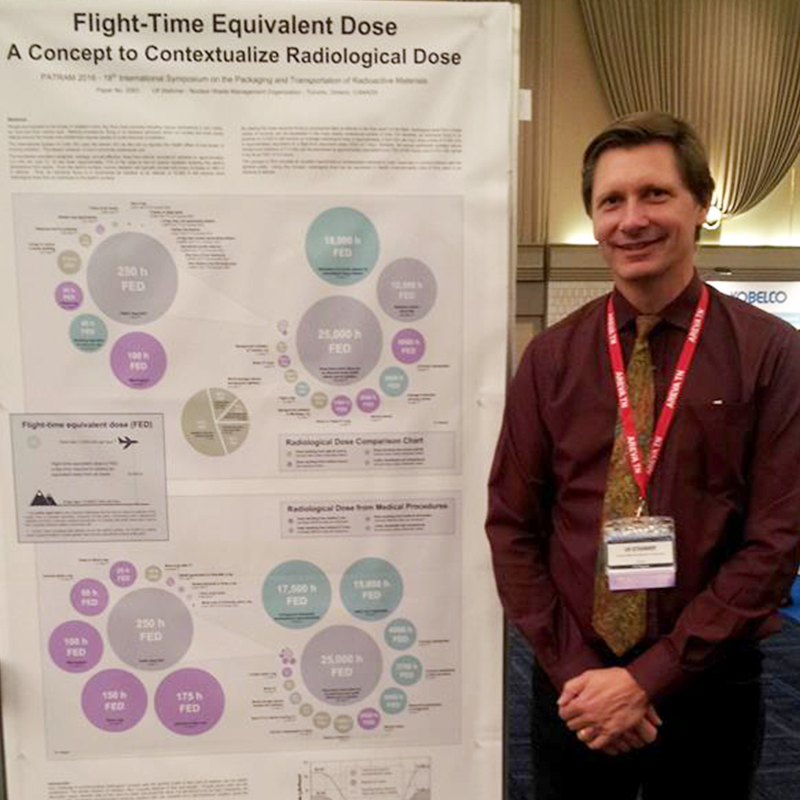Ulf Stahmer’s poster depicting his concept to discuss radiological dose in terms of flight-time equivalent dose won him the best poster award at the 18th International Symposium on the Packaging and Transportation of Radioactive Materials (PATRAM 2016) held in fall 2016 in Japan.
A senior transportation engineer with the NWMO, Mr. Stahmer does engagement work around the transportation safety aspects of Adaptive Phased Management – Canada’s plan for the safe, long-term management of used nuclear fuel. In his communications with people, he wrestled with the idea of how to make the discussion of radiological dose more accessible to varied audiences.
“I wanted to be able to communicate radiation dose in a manner that would take the fear away because it’s difficult to learn if you are afraid,” he said. “There was a need to contextualize the concept in a more personal manner that people would be more apt to remember.”
After extensive thinking, pondering and calculating – literally, Mr. Stahmer developed an idea and methodology to contextualize dose. By relating the dose one would receive during a commercial flight at altitude to the time spent on the flight, radiological dose, from a large variety of sources, can be expressed in the more readily understood context of time. This method provides a more accessible way of discussing radiological dose than the internationally accepted, but less understood, unit of Sieverts.
For example, using Mr. Stahmer’s method, the world average annual natural background radiation dose of 2.4 mSv can be equated to 600 hours of flight-time equivalent dose expressed as 600 flight-hours. A 0.01 mSv dose from a dental X-ray can be expressed as 2.5 flight-hours, or the 0.07 mSv annual dose someone would receive from living in a stone or brick building is equivalent to 17.5 flight-hours.
“It’s simple, but not simple,” Mr. Stahmer said, noting it took time to develop the methodology, but the end result was exactly what he wanted. “It was exciting to see how easily people at the conference (over 600 in attendance) grasped the concept and how well understood it was. For me, the greatest reward was to see the excitement it generated from the international community represented at the conference.”
Mr. Stahmer is hoping to eventually publish his work in a journal, but in the interim, the NWMO is considering how to apply his method to the way it communicates radiological dose with the public. For his part, Mr. Stahmer is engaging in dialogues that are much more easily understood by his audiences.

